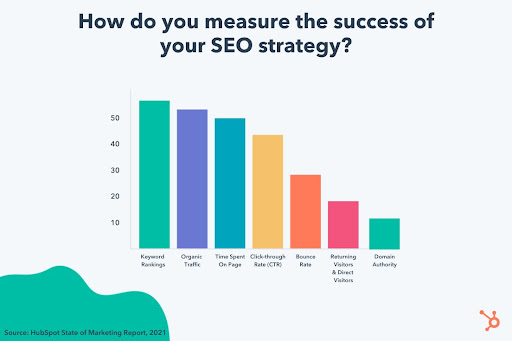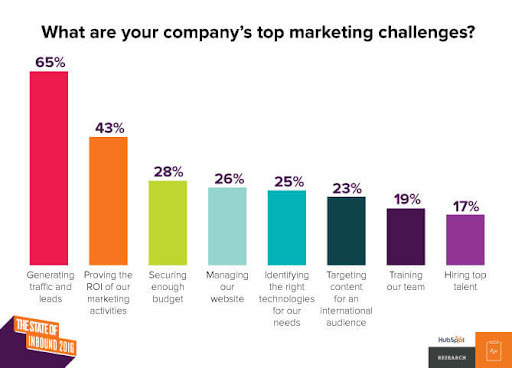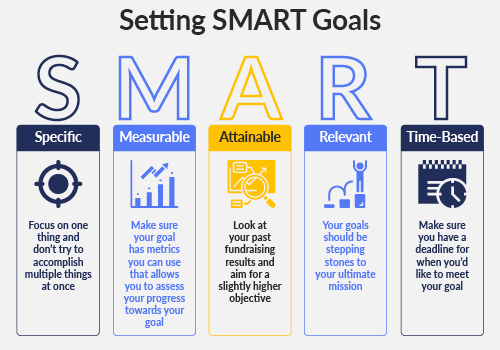When And How To Change Your Nonprofit Marketing Plan
Jun 30, 2022
You had a marketing plan.
You did all the necessary groundwork to raise the awareness and support your nonprofit needs. You identified objectives, decided on strategies, and put the whole strategic plan into motion.
But despite all that work, you find you are still falling short of your goals. Now what?
Reviewing the successes and failures of your marketing efforts is never easy. But by delving into the real data behind your results, and determining what’s working and what’s not, you’ll not only save yourself time and energy, you’ll also find new ways to reach your organizational objectives.
But when do you make changes to your marketing plan? And how do you get started?
As always, the first step is to...
1. Audit Your Current Nonprofit Marketing
In order to determine if the time is right to shake up your marketing plan, you need to evaluate your current marketing efforts. Because quite frankly, the time may NOT be right. You might be right on track with your organizational objectives thanks to effective campaigns and consistent messaging. If that’s the case the last thing you want to do is change or eliminate successful strategies in an overzealous overhaul.

It’s possible, however, your marketing plan is at least overdue for review, if not a full revitalization. A proper audit means you must…
Review Your Old Goals
Ideally, the marketing goals you established previously were written down for specificity and future reference. Perhaps you even broke them down into smaller milestones, in order to have quantifiable accomplishments to point to the next time you needed to talk to your board about marketing. If not, take the time to reflect on those objectives you set when you created your current plan and write them down now.
Here are some common marketing benchmarks for nonprofits, to help jog your memory:
- Build and grow your email subscriber list by _____(number) or _____(percent).
- Create a blog and publish content _____times per month, to deliver value to your audience and/or boost your website SEO.
- Expand your community relationships by hosting ____(number) of events or co-branded initiatives.
- Increase your social media engagement by posting ____times per week.
Whatever your objectives were, explore the motivations and methods of each:
- What were the perceived benefits of that goal to your nonprofit?
- How were you hoping to achieve that goal?
- What strategies worked better than you thought?
- What tactics didn’t work out the way you hoped?
- What can you learn from the intended objectives vs. actual outcomes?
- What should you do differently next time? What approaches would be more effective?
- What assets can be recycled, reused, repurposed in the future?
The more specific your answers, the more readily you can…
Assess Your Success
This might take a little research on your part. If it isn’t already part of your regular routine, it’s time to break out the Google Analytics and the Excel Spreadsheets and the hastily scrawled Notes-To-Self you buried deep in your desk for safekeeping.
It’s vital to be as detailed and objective as possible at this point in order to create a clear and data-driven report of your marketing. You can even take it one step further and create graphs or charts with your results.

That’ll make it much easier to get the Big Picture, discover trends and patterns over time, and ultimately…
2. Retrace Your Steps
Once you fully understand the outputs of your marketing efforts, it’s time to review the inputs that generated those results in the first place. This examination is more qualitative in nature than the last, as it will require you to reflect upon any and all of the steps you took in the pursuit of your marketing plan — whether you crossed the finish line or not.

If you DID NOT reach your goals:
There are two primary factors as to why this may be the case.
- Too Few Steps in the Right Direction: In order to reach your chosen marketing benchmarks you set, and eventually reach your goal, you must invest the energy and effort required to take the necessary steps to get there. Like all good things, these steps take time. And time is money.
For example, in order to increase your reach on social media, you have to have the content for your followers to engage with in the first place. This means you either have to create or curate relevant information, images, videos, and links to share. For more effective results, you must provide value, maintain a consistent schedule, meaningfully engage with your followers, and more.
If you just don’t have the time or energy to tackle the work yourself (which, if you are an ED or CEO, you probably don’t) you must be able and willing to delegate those responsibilities to someone else. Otherwise you end up with lackluster KPIs, stagnating support, and a board that wonders aloud what the point of all that expensive “marketing” is, anyhow. - Lots of Steps In the Wrong Direction: Conversely, it could be the case that you’ve thrown all the firepower and funding you’ve got into your marketing. But without the right strategic plan for all that action, you may end up running and running only to discover you took a wrong turn miles ago.
For example, you’ve committed to spreading awareness and garnering support via social media. You’ve created Instagram images, Facebook posts, TikTok reels, and SnapChat videos; you created accounts for your nonprofit on Pinterest, Reddit, Tumblr, and even Tinder, until you realized what Tinder was.
Unfortunately, you failed to factor in that a majority of your most valuable supporters don’t use any of these platforms. Some of them use LinkedIn, occasionally. The rest prefer email.
If you devote all of your not inconsiderable time and energy into tactics without strategy, you might end up with very impressive vanity metrics, but find that important messaging never reaches its intended audience. This can lead your board to wonder aloud what the point of all that expensive “marketing” is, anyhow.
Don’t get me wrong. Marketing for nonprofits is an art and a science. It requires tenacity, finesse, and more than a little luck. But when you track the metrics that matter most and consider the methods you employed, missed goals very often boil down to one of the two explanations above.
Your heart may be in the right place, but if you aren’t getting the results you want and the support you need, it’s time to rethink your marketing plan.
On the other hand…
If you DID reach your goals:
First of all, congratulations! That is no small accomplishment, and you should be very proud.
But if you’ve followed the steps above, you may have found some strategies that, although successful, were more costly, time-consuming, and/or superfluous than they needed to be.
Ask yourself questions like:
- Did that experimental new content really engage people?
- How much energy was spent on emails that went unopened?
- How many of your volunteers return to help at second and third events?
- What percentage of your donors offer financial support more than once?
- Do you really need twelve different social media platforms?
Effective marketing is not always about allocating more resources or changing direction entirely. Sometimes it’s about eliminating excess work, streamlining strategies, and optimizing the processes already in place.
Your heart might be in the right place, but if getting the results you want and the support you need is costing you more than it could or should, it’s time to rethink your marketing plan.
Either way: Before you go starting your next social media campaign or planning your next community event, you must first…
3. Know Your Objectives and Know Your Audience
If you don’t know where you’re going, not only will you not know how to get there, you might not even realize you’ve arrived once you do. A GPS only works if you type in a specific address.
Whether or not you achieved your previous goals, in order to move forward you must define what success looks like. This will allow you to then identify who you need to reach, and, in turn, where to direct your focus.
In other words, begin by deciding your…
Objectives: Start With Why
Did you ever see that TED Talk from Simon Sinek? If you haven’t, it’s called “How Great Leaders Inspire Action,” and it addresses the power of beginning with Why, continuing on to your How, and then finishing with your What. He refers to it as the “Golden Circle.”

This perfectly parallels the order of operations for an effective nonprofit marketing plan:
Objective (The Why) ---> Strategy (The How) ---> Tactics (The What)
Tactics without a strategy result in wasted effort. Strategies without an objective result in inconsequential accomplishment.
That’s why step number one is to outline your objectives. These could include:
- Increased donor retention
- Additional volunteers
- Higher event attendance
- More website traffic
- Better community engagement online
Be specific. What percentage? How many? Better how? Pick numbers and deadlines that you can realistically reach. Ambitious is good, but attainable is better. Plus, if you pick solid goals that you then surpass, how good does that feel?

Don’t forget that this process is about both identification AND prioritization, especially in regards to your social impact. That’s why I shared the Golden Circle above. Start with why.
Why more social media followers? Why prioritize more website traffic? Why prioritize the retention of existing donors, instead of finding new donors? Why do those objectives matter to the recipients of your organization’s altruism?
Once you know your overarching objectives, you can then more readily identify your…
Audience: Don’t Forget Who
Use the above objectives to determine the target audience(s) for each:
- Who are they, demographically speaking?
- What do they want? What do they need? What do they value?
- Which digital platforms do they use?
- Which kinds of content do they respond to?
- What change do they wish to see in the world? How can you help?
Crafting solid messaging is infinitely easier when you know to whom it is addressed. That will allow you to choose the right words, the right media, the right schedule, the right content, and the right ways to connect, engage, and inspire pertinent action.
Reach out to your target audience how and where they connect for the best results.

Additionally, use this knowledge of your target audiences to figure out where there is overlap. Certain goals will require unique messaging directed at certain segments of your audience, but others will lend themselves to broader outreach. Shared character traits, similar values, and like-minded motivations between groups allows for marketing strategies that accomplish multiple goals simultaneously.
Why and Who 一 the success or failure of your nonprofit marketing plan hinges on these two considerations above all, and must be sufficiently addressed before any further action. Only then can you…
4. Revise Your Plan
At long last, you can finally move into the Strategy (How) and Tactics (What) of your plan. This is when you can start to break down your Big Goals into more manageable milestones and benchmarks.
- Your objective is to get 400 new e-newsletter subscribers this year? Don’t focus on the 100 per quarter. Instead, get 30 more this month. Then 30 more next month. Baby steps.
- Your objective is to increase donor retention by 20% this summer? Figure out what you can do this week. Call 3 of your most loyal, long-time donors. Brainstorm 3 community events. Watch our video on how to reconnect with your donors. Baby steps.
- Your goal is to double email click-through rates this quarter? Do a full audit of your email outreach this week. Use a subject line analyzer next week. Bring in the experience and expertise of a firm that specializes in nonprofit marketing, by scheduling a free 30-minute consultation. Baby steps.
With milestone marketing, you’ll know what you need to succeed, who you want on your ideal team, and where to find the marketing help you deserve.
A strategy with more accessible and quantifiable goals means more tangible tactics and more clear, consistent marketing victories
And regular, recurring achievement will result in increased advocacy, boosted productivity, and a board that wonders aloud why they ever doubted the value of your marketing plan.

